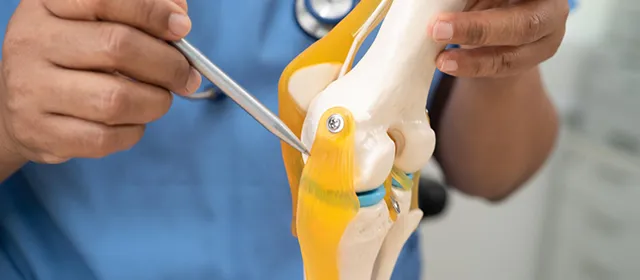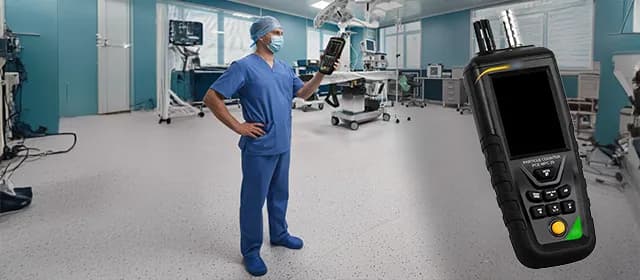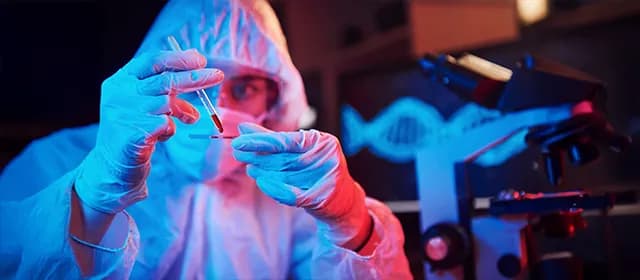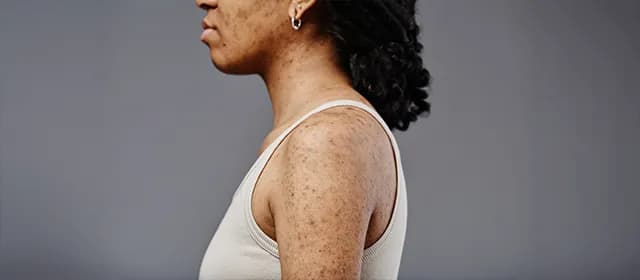Implantable cardiovascular and orthopedic devices must satisfy demanding biocompatibility, mechanical, and functional criteria over the lifetime of the patient. Bare metallic or polymeric implant surfaces interact directly with blood, tissues, and host immune systems. Adverse responses include thrombosis, inflammation, fibrous encapsulation, and implant loosening or infection.
Biocompatible coatings act at the interface between device and body to mitigate adverse reactions, promote integration, and prolong device performance. Recent advances in coating chemistry, surface engineering, and anti-infective strategies strengthen the case for broader adoption. This article examines mechanisms through which biocompatible coatings improve device outcomes, reviews key coating strategies for cardiovascular and orthopedic implants, analyzes recent clinical or preclinical data, and assesses challenges and future directions.
Kings Research estimates that the global biocompatible coating market will grow from USD 17.14 billion in 2024 to USD 47.16 billion by 2031, exhibiting a CAGR of 15.56% over the forecast period.
Understanding the Biological and Mechanical Challenges That Drive the Need for Biocompatible Coatings
Biological challenges at the interface:
Implanted cardiovascular devices such as stents, grafts, or valves face immediate exposure to flowing blood and its cellular and molecular constituents. Platelet adhesion, activation of coagulation cascades, and protein adsorption events occur within seconds of implantation. Surfaces that lack hemocompatibility may trigger thrombosis or intimal hyperplasia. A study of hemocompatible surface coatings using photochemically generated polymer networks demonstrated a significant reduction in platelet adhesion over extended perfusion times, while maintaining coating stability after sterilization and storage.
Orthopedic implants such as joint replacements, fixation plates, and intramedullary nails must integrate with bone (osseointegration) and resist bacterial colonization. Surfaces that poorly support bone ingrowth may result in loosening or fibrotic encapsulation. Infection presents a severe complication that can necessitate revision surgery. Coatings that deliver antibacterial function without cytotoxicity are thus highly desirable.
Performance objectives of coatings:
Primary objectives of biocompatible coatings include reducing thrombogenicity, enhancing endothelialization in cardiovascular devices, promoting bone integration in orthopedic systems, and preventing bacterial adhesion or biofilm formation. Secondary objectives include mechanical stability, chemical durability in a physiological milieu, controlled release of biologically active agents, and minimal disruption of device mechanical properties. The choice of coating must balance these competing demands.
How Advanced Coating Strategies Improve Hemocompatibility in Cardiovascular Implants
- Hemocompatible polymeric and hydrogel coatings: Hydrophilic polymer coatings, particularly zwitterionic and polyether networks, can resist protein adsorption and platelet adhesion. In a 2025 stability study, three anticoagulant hydrogel coatings (PMPC, PAMPS, and PSS) were applied to device surfaces. The PSS coating displayed superior mechanical and chemical stability while retaining anticoagulant efficacy in vitro. That stability is critical for chronic implants under pulsatile flow and dynamic mechanical stress.
- Endothelium-mimicking and biofunctional coatings: One approach engineers a coating to mimic the natural endothelial surface function. A durable endothelium-mimicking coating has been developed for stents using surface engineering that encourages endothelial cell adhesion while discouraging smooth muscle proliferation. Such coatings enhance hemocompatibility and reduce late restenosis risk.
- Graphene coatings on stent surfaces represent another innovation. A recent in vitro and in vivo study showed that graphene-coated stents promoted rapid endothelial repopulation relative to standard drug-eluting ones, while ensuring biocompatibility in animal models.
- Drug-eluting and polymer-drug combination coatings: Drug-eluting stents (DES) combine drug and polymer layers to suppress neointimal hyperplasia. When applied to biodegradable metallic platforms (such as magnesium alloy stents), optimization of coating polymers influences corrosion resistance, hemocompatibility, and drug release kinetics. In a 2025 test of polymer-drug coatings on WE43 magnesium alloy stents, the PTX-PEG coating achieved a hemolysis rate of 0.6 percent, within clinical safety thresholds (< 5 percent). (Source: pubmed.ncbi.nlm.nih.gov)
This result demonstrates that proper polymer selection and coating engineering can improve both corrosion resistance and blood compatibility in advanced stent platforms.
Coating Strategies in Orthopedic Devices
Osseointegration-promoting coatings:
Porous titanium and hydroxyapatite (HA) remain standard coating materials to enhance bone integration. Porous titanium coatings help initial mechanical interlock, while controlled porosity fosters bone ingrowth and long-term stability. HA coatings on implants support calcium phosphate exchange and bone remodeling. The design of coating thickness, porosity, and microstructure critically influences durability and mechanical robustness.
Recent in vivo work with titanium implants coated or doped with bioactive glass powder composites showed accelerated bone growth during early healing phases. Bone-to-implant contact (BIC) improved over four to twelve weeks, although long-term differences faded by week 12 (Source: arxiv.org). That outcome suggests coatings may provide a beneficial “jump start” to early osseointegration.
Antibacterial and non-releasing noble-metal coatings:
Infection control is a critical challenge in orthopedics. Noneluting coatings that resist bacterial colonization without releasing antibiotics reduce concerns over resistance and cytotoxicity. Recent clinical reports from Bactiguard’s noble-metal alloy coatings in orthopedic implants showed promising reductions in implant-associated infections in treated populations versus noncoated devices.
Onkos Surgical recently secured first-of-its-kind FDA De Novo approval for a proprietary antibacterial coating for tumor and revision orthopedic implants. The coating is noneluting and demonstrated a 99.999 percent kill rate in in vitro testing of bacteria commonly encountered in operating room environments.
Comparative Analysis: Cardiovascular vs Orthopedic Coating Needs
Cardiovascular coatings face continuous shear stress, pulsatile flow, and direct blood interface. The requirement for strict hemocompatibility and long-term stability under dynamic mechanical loading is paramount. Coatings must resist delamination under cyclic expansion and contraction events.
Orthopedic devices interface with bone and soft tissues rather than blood flow. Coatings must endure mechanical loading (tension, compression, torsion) and support bone ingrowth while resisting bacterial infiltration. Infection risk is a dominant concern, so antibacterial performance is essential, and toxicity to adjacent host tissue must be minimal.
Despite these differences, common coating challenges apply in both fields: adhesion stability, durability under physiological stress, uniform coverage of complex geometries, minimization of thickness to preserve mechanical tolerances, and compatibility with sterilization processes.
Challenges and Limitations
Mechanical delamination, cracking, or fatigue of coatings represent persistent failure modes, especially under chronic cyclic loads. Maintenance of adhesion under motion and micromotion is critical. Coating degradation or erosion over time can lead to exposure of the underlying substrate and loss of performance.
Stability of biologically functional coatings in complex physiological environments presents challenges. The 2025 study of anticoagulant hydrogels emphasized that long-term chemical and mechanical stability is necessary to maintain coating efficacy.
Thorough in vivo validation is required. Many coatings show excellent in vitro outcomes but fail to maintain function in animal or human implants. Immune reactions, foreign body response, and tissue remodeling can degrade coating performance.
Balancing antibacterial potency with host cell compatibility is delicate. Eluting antibiotics may prevent bacterial colonization but may also impair osteoblast growth or endothelialization. Noneluting coatings reduce that risk but may deliver less immediate antimicrobial effect.
Complex geometries and internal implant surfaces complicate uniform coating application, particularly in porous structures or cavities. Techniques such as spray deposition, dip coating, electrodeposition, or atomic layer deposition must adapt to 3D structures without introducing weak zones.
Regulatory and clinical translation challenges include demonstrating long-term safety, biostability, mechanical compatibility, and cost-effectiveness compared to uncoated or conventional implants.
How Latest Clinical and Preclinical Studies Validate the Benefits of Biocompatible Coatings
Graphene-coated stents showed enhanced endothelialization and maintained mechanical properties in small-animal models. That evidence suggests the possibility of improved healing response without compromising integrity.
Polymer–drug coatings on magnesium stents achieved extremely low hemolysis rates (0.6 percent) and stable drug release profiles while enhancing corrosion resistance. That combination addresses both mechanical and biological challenges of biodegradable cardiovascular implants.
Clinical investigations of Bactiguard’s coatings on orthopedic trauma implants revealed fewer implant-associated infections relative to controls in high-risk patients. The FDA’s De Novo approval of Onkos Surgical’s antibacterial coating confirms regulatory acceptance of novel, noneluting antimicrobial coatings for orthopedic use.
Future Outlook
Next-generation coatings will increasingly focus on multifunctionality: combinations of thromboresistance, endothelial guidance, antibacterial defense, and growth factor delivery. Use of stimuli-responsive polymers (responsive to pH, enzymes, or local inflammation) could enable on-demand bioactivity.
Integration of nanomaterials such as graphene, MXenes, or nanostructured ceramics will refine surface properties, conductivity, and cellular interactions. Coatings that mimic extracellular matrix proteins or peptides may enhance direct cellular adhesion and modulate healing responses.
Advanced deposition techniques, including atomic layer deposition, magnetron sputtering, and molecular layer coatings, can achieve nanoscale thickness control and conformal coverage over complex shapes. That precision may help maintain mechanical fidelity while delivering functional layers.
Long-term in vivo studies in large animal models and well-controlled human clinical trials will be essential. Real-world performance metrics (device longevity, complication rates, revision frequency) must validate the promise of coating innovations.
Coatings must adapt to evolving device architectures such as biodegradable scaffolds, additive manufactured implants, shape-memory alloys, and patient-specific implants. Coating processes must remain compatible with emerging substrate materials and design geometries.
Conclusion
Biocompatible coatings represent a powerful modulator in the performance and longevity of cardiovascular and orthopedic implants. Through reductions in thrombogenicity, enhancements in endothelial healing, promotion of osseointegration, and prevention of infection, coatings bridge the gap between device material and host biology. Success depends on mechanical stability, chemical durability, biological selectivity, and translation to clinical practice. The next wave of development must integrate multifunctional behavior, nanoscale precision, and robust in vivo validation to fully realize the potential of coatings in shaping implantable device futures.




